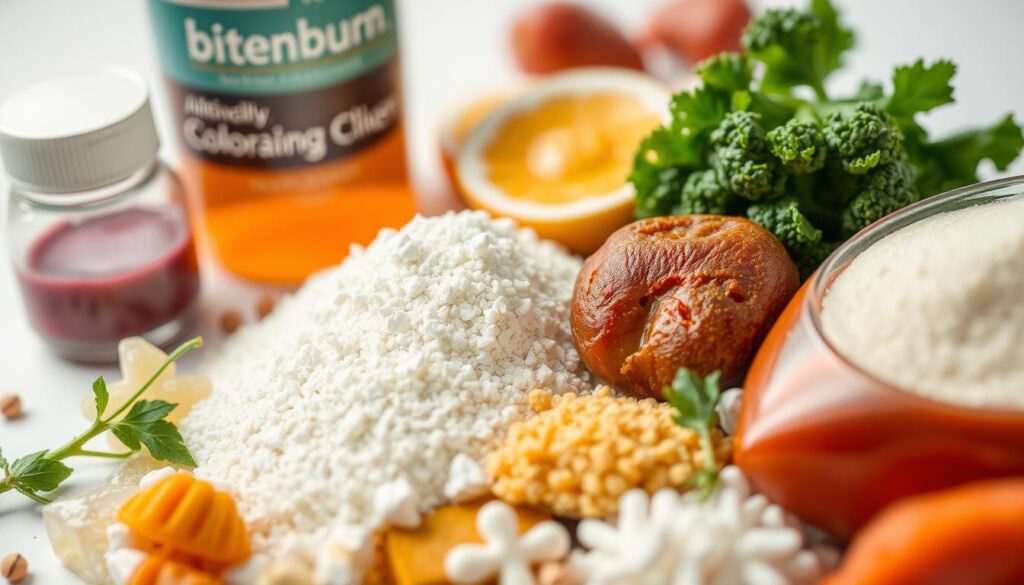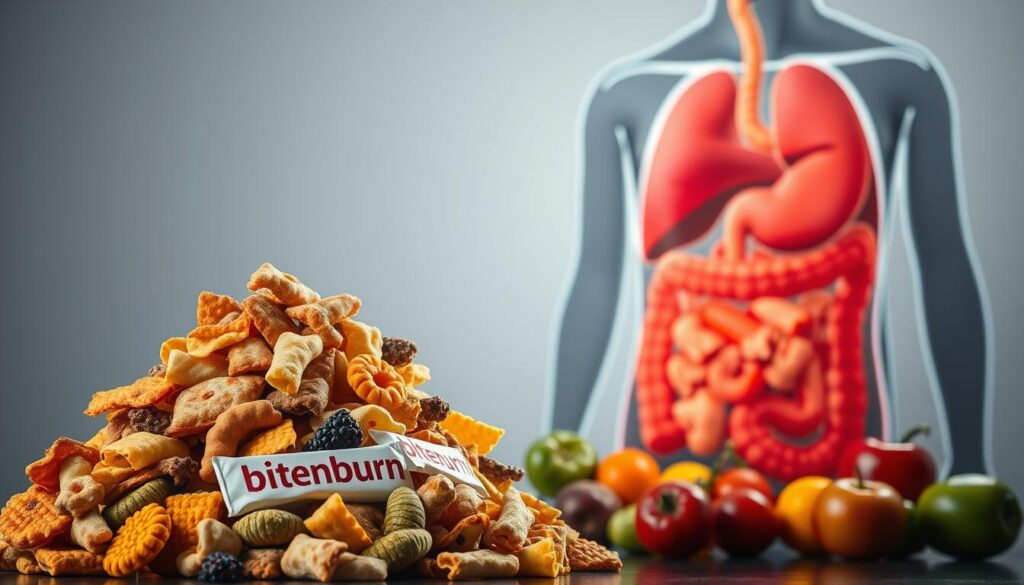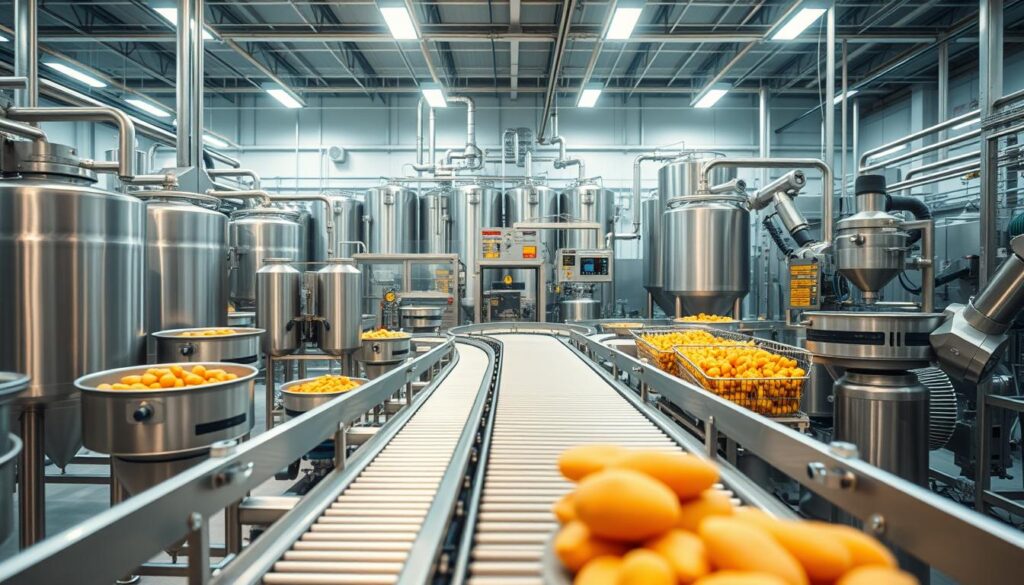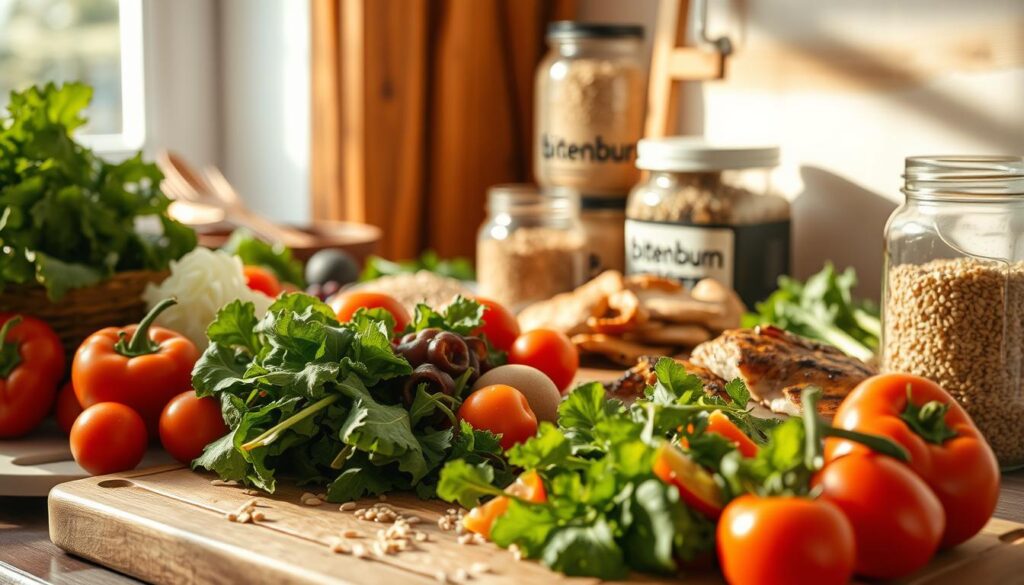What if the items filling your grocery cart are silently reshaping your health? While most shoppers recognize terms like “processed” and “unprocessed,” few grasp how processing levels transform what lands on their plates. The USDA defines processed items as anything altered from its natural state—even basic steps like washing apples or freezing broccoli.
But here’s the twist: ultra-processed products now account for nearly 60% of calories consumed by Americans. These heavily modified items—think sugary cereals and ready-to-eat meals—dominate diets while delivering minimal nutrients. Many families unknowingly prioritize convenience over nourishment, creating ripple effects for long-term wellness.
This guide unpacks how various processing methods impact vitamin content, shelf stability, and your body’s ability to absorb fuel. You’ll discover why choosing between a baked potato and instant mashed potatoes matters more than you realize. Let’s explore what truly separates minimally altered ingredients from their factory-made counterparts.
Key Takeaways
- Ultra-processed items make up 58-60% of average U.S. calorie intake
- Basic preparation steps still qualify as food processing under USDA guidelines
- Heavily modified products often lack fiber and essential nutrients
- Processing levels directly influence how your body uses food
- Not all altered items are unhealthy—some methods preserve nutrition
- Label literacy helps identify unnecessary additives in packaged goods
Understanding Food Processing Levels
Have you ever wondered how that box of cereal or bag of baby carrots got to your kitchen shelf? Processing methods determine whether items retain their natural benefits or become chemical-laden products. Let’s explore the system experts use to separate true nourishment from factory-made imitations.
Overview of the NOVA Classification System
The NOVA system, developed by Brazilian researchers and endorsed by the World Health Organization, sorts items into four clear groups. Unlike old nutrition labels that focus only on vitamins or calories, this approach examines how factories alter raw ingredients. It reveals why frozen blueberries and blueberry-flavored candy bars affect your body differently.
Defining Minimal and Ultra Processing
Minimally processed foods undergo simple changes like washing, chilling, or pasteurizing. Think bagged spinach or roasted nuts. Ultra-processed items like soda and chicken nuggets contain additives you wouldn’t find in home kitchens—emulsifiers, artificial colors, and shelf-stabilizers.
| NOVA Group | Examples | Processing Methods |
|---|---|---|
| Group 1 | Fresh fruits, eggs | Drying, freezing |
| Group 4 | Instant noodles, energy bars | Extrusion, hydrogenation |
The Institute of Food Technologists notes that some processing preserves nutrients—like canning tomatoes to lock in lycopene. But heavy modification often strips fiber and alters how your body absorbs calories. Learning these distinctions helps you spot true nourishment amid clever packaging claims.
Core Concepts of Processed Foods

When your snack wrapper lists more chemicals than actual nutrients, you’ve entered ultra-processed territory. Modern manufacturing reshapes basic ingredients into complex formulas that prioritize shelf life over nourishment. Let’s decode what turns farm-grown items into factory-made products.
What Constitutes Processed and Ultra-Processed Foods
Processed foods undergo intentional changes from their natural state. This includes canned beans or frozen vegetables—items altered for safety or convenience. Ultra-processed versions like microwave meals and protein bars contain substances rarely found in home kitchens.
| Category | Key Components | Manufacturing Techniques |
|---|---|---|
| Processed | Oils, salted nuts | Fermentation, pasteurization |
| Ultra-Processed | Hydrolyzed proteins, maltodextrin | Extrusion, hydrogenation |
The Role of Additives and Ingredients
Food scientists use emulsifiers like lecithin to prevent ingredient separation in dressings. Stabilizers maintain texture in yogurt, while high-fructose corn syrup sweetens sodas invisibly. These components help products survive months in warehouses but offer minimal nutritional value.
Watch for these common additives:
- Preservatives (sodium benzoate) – Extend expiration dates
- Artificial colorants – Enhance visual appeal
- Flavor enhancers – Mask low-quality ingredients
Next time you grab packaged items, check labels for soy protein isolate or hydrogenated oils—tell-tale signs of heavy processing. Recognizing these components helps you choose foods closer to their natural origins.
Key differences between processed and unprocessed food indepth knowwledge
Ever questioned why some items lose their vitality while others gain hidden benefits? Processing methods directly influence what your body absorbs and how meals satisfy your senses. Let’s examine how alterations affect both nourishment and eating experiences.
Nutritional Value Comparison
Heat-treated items often lose water-soluble vitamins—like vitamin C in boiled spinach dropping by 50%. Yet tomato paste delivers 3x more lycopene than raw tomatoes due to concentrated processing. Pasteurized milk retains calcium while eliminating harmful bacteria.
| Processing Method | Nutrient Change | Example |
|---|---|---|
| Canning | ↑ Lycopene bioavailability | Tomato products |
| Refining | ↓ Fiber & phytochemicals | White flour |
| Freeze-drying | Preserves antioxidants | Blueberries |
Impact on Flavor and Texture
Ultra-processing often masks natural tastes with artificial sweeteners and MSG. Fiber removal in juices creates smoother textures but spikes blood sugar faster. Roasted nuts develop richer flavors through controlled heating while retaining healthy fats.
Crunchy carrot sticks trigger longer chewing than soft baby food purees, slowing digestion. This impacts how full you feel and how your body processes energy. Choosing items closer to their natural state often supports better metabolic responses.
Understanding these changes helps you navigate grocery aisles strategically. While some modifications boost safety or nutrient access, others strip essential components critical for long-term wellness. Balance convenience with how processing affects shelf life (covered in detail later) and your personal health goals.
Benefits and Drawbacks of Food Processing

Modern kitchens face a daily challenge: nourishing families quickly while maintaining nutritional quality. Processing technologies create solutions and complications that shape your grocery choices more than you might realize.
Pros: Convenience and Enhanced Shelf Life
Frozen vegetables and canned beans save hours of prep time while locking in essential nutrients. The CDC notes fortified foods helped reduce rickets by 95% after vitamin D was added to milk in the 1930s. Today, folic acid-enriched flour prevents 1,300 birth defects yearly in the U.S.
Pasteurization eliminates dangerous bacteria in dairy products—a life-saving advancement. Processing also lets strawberries from Chile stock Minnesota shelves in January, making nutritious foods accessible year-round.
Cons: Nutrient Loss and Health Risks
High-heat methods destroy heat-sensitive vitamins like B and C. A USDA study found canned peaches lose 40% of vitamin C compared to fresh. Ultra-processed items contribute 90% of added sugars in American diets, increasing obesity risks.
| Benefit | Drawback | Example |
|---|---|---|
| Longer shelf life | Added preservatives | Canned soups |
| Nutrient fortification | Fiber reduction | White rice |
| Year-round availability | Artificial flavoring | Fruit snacks |
As the CDC confirms, strategic processing solves public health crises. Yet the same technologies enable snack aisles filled with hyper-palatable processed foods. Your best move? Use frozen spinach for quick meals but skip microwave dinners loaded with sodium.
Impact on Health and Nutritional Profiles

Could your daily meals be rewriting your body’s biological code? Research reveals startling connections between modern eating patterns and systemic health disruptions. The choices you make at mealtimes directly influence cellular function, metabolic pathways, and disease development.
Nutrient Retention versus Depletion
Processing strips protective compounds from whole ingredients. A Journal of Nutrition study found mechanically separated meats lose 40% of zinc content compared to hand-cut portions. Conversely, pressure-canning legumes increases iron bioavailability by 25% through phytate reduction.
Ultra-processing creates nutrient deserts through multiple transformations. Breakfast cereals often contain synthetic vitamins to replace those destroyed during extrusion. These lab-made additives lack the synergistic compounds found in natural sources.
Association with Chronic Diseases
Clinical trials demonstrate alarming patterns. Participants consuming ultra-processed diets ate 500 more calories daily than those eating whole foods. This equates to 1lb weight gain every 7 days without conscious overeating.
| Health Condition | Risk Increase | Key Study |
|---|---|---|
| Type 2 Diabetes | 15% per 10% UPF intake | JAMA Internal Medicine |
| Childhood Obesity | 34% higher incidence | BMJ Global Health |
| Colon Cancer | 29% elevated risk | Lancet Oncology |
Emerging research links food additives to gut microbiome alterations. Emulsifiers like polysorbate-80 damage intestinal barriers, triggering inflammation. These changes may explain rising autoimmune disease rates in processed food-heavy populations.
Role of Modern Food Technology

Innovative engineering is reshaping how we preserve and prepare meals without sacrificing quality. Factories now deploy advanced methods that maintain nutrients while addressing environmental concerns. These breakthroughs answer consumer demands for both convenience and transparency.
Innovations in Processing Techniques
High-pressure processing (HPP) eliminates pathogens in cold-pressed juices while preserving vitamins. Cold plasma technology decontaminates spices without heat, retaining their natural flavors. Ultrafiltration systems concentrate dairy proteins more efficiently than traditional methods, reducing waste.
- Membrane-concentrated juices retain 90% of heat-sensitive antioxidants
- Spray-dried milk powders preserve 15% more lysine than roller-dried versions
- Pulsed electric fields soften plant tissues for easier nutrient extraction
Sustainable Practices and Future Trends
The FAO reports new techniques use 40% less energy than conventional canning. Upcycled food waste now becomes biodegradable packaging through enzymatic treatments. Manufacturers increasingly adopt:
| Technology | Environmental Benefit | Application |
|---|---|---|
| Solar drying | Reduces fossil fuel use | Fruit preservation |
| AI-driven sorting | Cuts water waste | Vegetable processing |
Plant-based meat alternatives leverage extrusion tech to mimic whole-food textures. Personalized nutrition platforms analyze DNA to recommend optimized meal kits. As climate challenges intensify, these advancements prove essential for feeding populations sustainably.
Practical Strategies for Healthier Eating

Your kitchen habits need an upgrade that balances nutrition with real-world demands. Transitioning to minimally processed foods doesn’t require hours of prep—just smarter systems. Let’s transform how you approach meal creation and grocery runs.
Meal Planning with Fresh Ingredients
Start Sundays by roasting a sheet pan of vegetables—bell peppers, zucchini, and carrots. Pair with batch-cooked quinoa or brown rice for instant meal bases. Use these components in salads, stir-fries, or wraps throughout the week.
Swap sugary breakfast cereals for steel-cut oats topped with fresh berries. Replace butter in cooking with mashed avocado or almond butter on whole-grain toast. These changes add fiber while cutting hidden sugars.
Grocery Shopping Like a Pro
Stick to store perimeters where fresh produce and proteins live. When buying packaged foods, check labels for short ingredient lists—5 items or fewer. Choose frozen veggies without sauces and canned beans labeled “no salt added.”
| Common Mistake | Smart Swap | Benefit |
|---|---|---|
| White bread | Sprouted grain bread | Higher fiber |
| Flavored yogurt | Plain Greek yogurt + fruit | Less added sugar |
| Instant mashed potatoes | Pre-chopped fresh potatoes | Preserved nutrients |
For dietary success, keep washed greens and hard-boiled eggs ready. Store pre-portioned nuts in your car or bag. These habits make nutritious choices effortless when hunger strikes.
Analyzing the Latest Research and Trends
Your grocery receipt tells a story researchers are racing to decode. Global studies reveal a $594 billion expansion projected for ultra-processed products by 2028—growth outpacing many tech sectors. This industrial-scale shift reshapes diets faster than nutritional guidelines can adapt.
Insights from USDA and Global Food Studies
The USDA confirms these items now supply 60% of American calories—up 11% since 2001. BMJ research shows children consume 67% of their energy from modified products. Mexico’s soda tax and Chile’s warning labels demonstrate how nations combat this trend through policy.
Shocking Market Statistics and Health Research
Every 10% increase in ultra-processed food intake links to 15% higher diabetes risk across 12 countries. Brazil’s public health initiatives reduced sugary drink sales 35% in 5 years through education campaigns. Yet U.S. consumption patterns remain stubbornly high, with 78% of school lunches containing engineered ingredients.
These findings demand smarter food literacy. While manufacturers innovate, your choices determine whether convenience fuels vitality or chronic disease. The data proves every shopping trip shapes both personal health and global markets.

